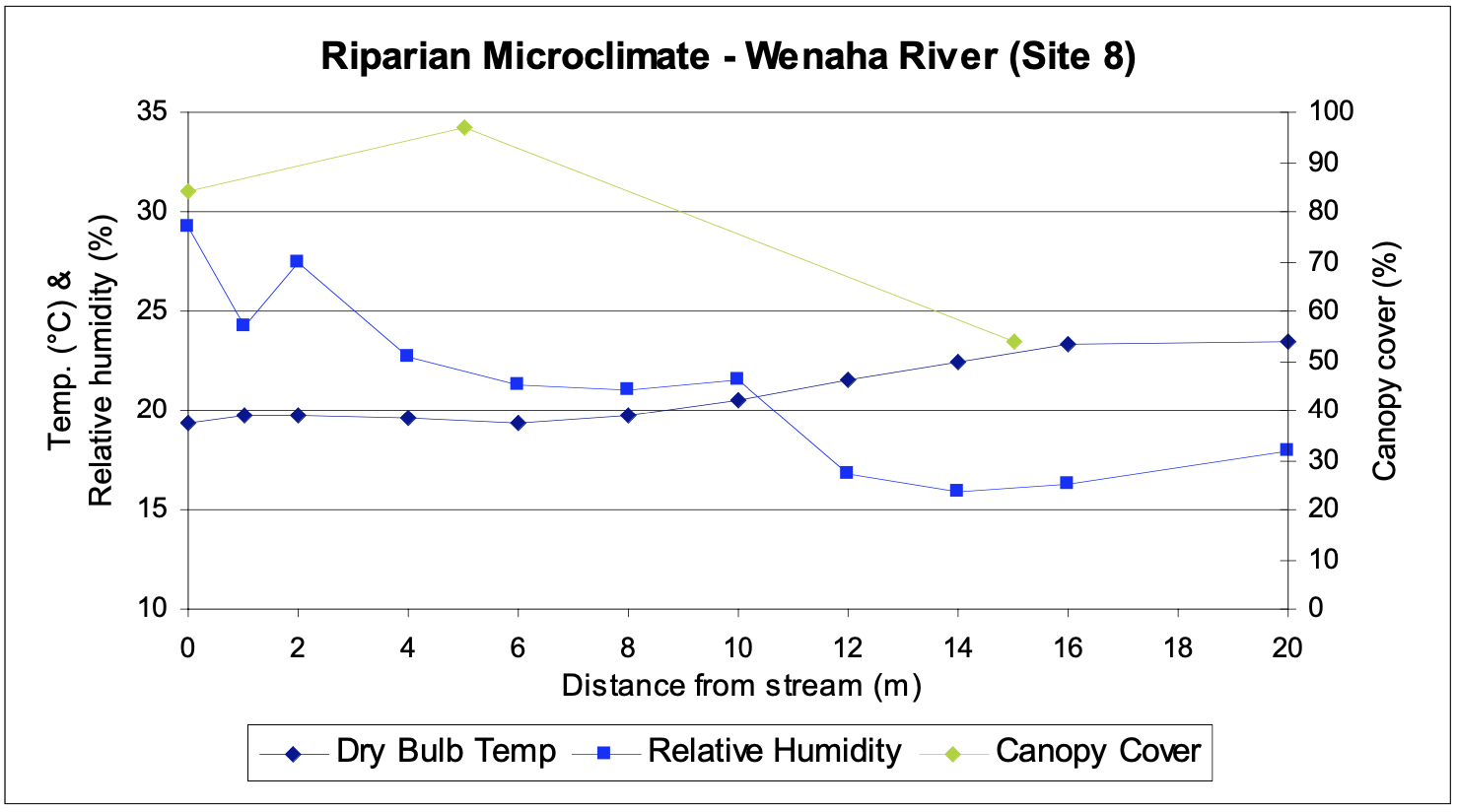What is the effect of riparian vegetation on very local climatic conditions? Although streams have been reported to have a significant influence on air temperatures and relative humidity as compared to upland forested areas (Brosofske et al. 1997), I decided to find out for myself what that effect would be. I recorded air temperature, relative humidity, and wind speed (the latter found to be negligible) at one to four meter intervals, beginning at the river’s edge, along a concurrent vegetation transect at the Wenaha River site (Site 8) over a ten minute period from 2:18pm to 2:28pm, June 23, 2007. The river was about 10m wide at this location. The riparian zone was also about 10m wide, beyond which vegetation thinned to mostly scattered ponderosa pines, with much light availability. There was no cloud cover at the site.
The figure below shows the results of these measurements. In addition to temperature and humidity, canopy cover from the vegetation transect is included. The temperature is clearly lowest in the riparian area, where canopy cover is highest. Only when the canopy cover decreases significantly does the temperature begin to increase. Conversely, relative humidity is highest along the river’s edge, and decreases in steps away from the river: first in the riparian zone and second in the non-riparian upland area. The fact that the humidity is highest along the river suggests that evaporation from the river contributes more to humidity than does transpiration from the plants.

REFERENCE
Brosofske, K. D., J. Chen, R. J. Naiman, and J. F. Franklin. 1997. Effects of harvesting on microclimate from small streams to uplands in western Washington. Ecological Applications 7:1188-1200.
